Picking the best motherboard for your new gaming PC can often be overlooked by builders. After all, it’s usually the graphics card and CPU that get the most attention due to being the two most expensive purchases for any build.
But when you really think about it, the motherboard is just as important as anything else. Everything you put into your machine has to be plugged into the motherboard, and it has to have the right connections and compatibility to make them work.
Your motherboard choice can also impact the size of your overall build as well as the CPU you ultimately go with. So, if you’re having trouble making a decision look no further than the best motherboards for PC gaming in 2020. We’ve even included the best option for you budget builders out there that will give you the features you need at a cost that won’t break the bank.
For more help with your PC build, be sure to check out the best CPUs and graphics cards available.
All CPU prices are listed in USD.
Gigabyte Z390 Aorus Ultra
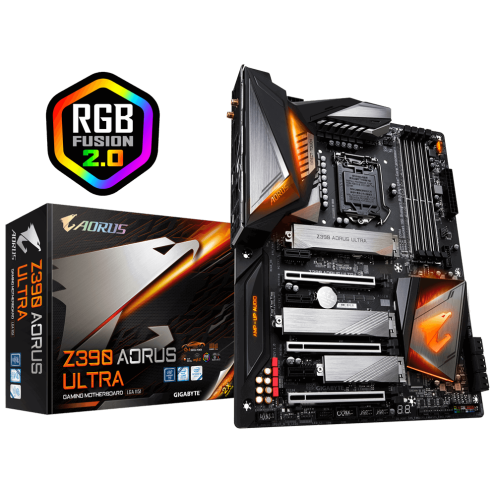
Product Specs:
Socket: LGA-1151 (8th & 9th Gen) | Chipset: Intel Z390 | Form Factor: ATX | Memory Support: (4) DDR4 up to 128GB (32GB x 4) | Storage: (3) M.2, (6) SATA | PCIe Slots: x16, x16(x8), x16(x4), (3) x1
Average Price: $219.99
Rundown: With a lower cost than most motherboards at this spec range, the Aorus Ultra from Gigabyte is truly the biggest “bang for your buck” board for any Intel build. It features three M.2 slots for SSD installation, built-in WiFi, six total PCIe slots, and optical audio. There are also 10 rear USB ports to allow you to connect all of your devices to your machine without compromise.
It’s rare to get a motherboard as feature-rich as the Aorus Ultra which makes it the perfect Intel board for any budget and any build. To get something comparable from other manufacturers, you’re looking at spending $25-$50 more, minimum. And if you’re an RGB fan, it also comes with two RGBW headers along with onboard RGB lighting.
You can go as far as saying this is the best sub-$250 motherboard we’ve seen for this generation of Intel CPUs.
ASUS ROG Maximus XI Hero WiFi
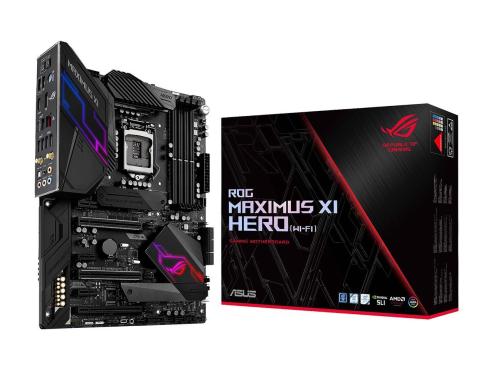
Product Specs:
Socket: LGA-1151 (8th & 9th Gen) | Chipset: Intel Z390 | Form Factor: ATX | Memory Support: (4) DDR4 up to 64GB (16GB x 4) | Storage: (2) M.2, (6) SATA | PCIe Slots: (2) x16 (x16, dual x8 or x8/x4/x4), x16 (x4), (3) x1 | Video Ports: HDMI, DisplayPort
Average Price: $279.99
Rundown: If overclocking and multiple PCIe slots are important to you for your Intel build, this is probably going to be the board you end up with. Despite its $280 price tag, which can be hefty to some, the ROG Maximus XI Hero provides top-tier performance for less than other competing motherboards, including other ASUS products.
Overclocking can be done stably at 5GHz with little-to-no real voltage spikes and can max out RAM speeds at 4400MHz or greater.
Like many on this list, the board has WiFi, but it’s arguably the worst-performing connection of the group. It also features just eight rear IO USB (seven Type-A, one Type-C) which can feel a bit limiting.
MSI MPG X570 Gaming Pro Carbon WiFi
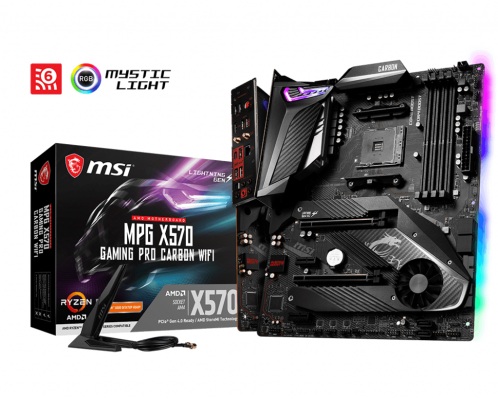
Product Specs:
Socket: AM4 (2nd & 3rd Gen Ryzen) | Chipset: AMD X570 | Form Factor: ATX | Memory Support: (4) DDR4 up to 128GB (32GB x 4) | Storage: (2) M.2, (6) SATA| PCIe Slots: x16(x16/x8/x4), (2) x1 | Video Ports: HDMI
Average Price: $249.99
Rundown: The biggest selling points for the MSI MPG X570 Gaming Pro Carbon WiFi are the 2 PCIe 4.0 M.2 slots that can offer double the speed of the previous generation 3.0 slots. Another plus is the WiFi 6 compatible adapter that can give you connection speeds nearly equal to that of a hardwired connection. Of course, that requires you to have a WiFi 6-compatible router to take full advantage of the feature.
The Gaming Pro Carbon WiFi also offers solid cooling as each of the M.2 slots have dedicated heat shields to limit possible thermal throttling, which is when the clock speed is automatically lowered based on the amount of heat being generated.
Like other boards, the extended WiFi antenna allows for better signal coverage away from your case. One of my biggest problems with this is the lack of space utilization on the rear IO panel. The board offers seven USB-A ports on the back along with one USB-C. But there’s room on there to add a few more USB ports, especially when other boards at lower price points have included as many as 10-12 ports for users.
Asus X570 ROG Crosshair VIII Hero WiFi
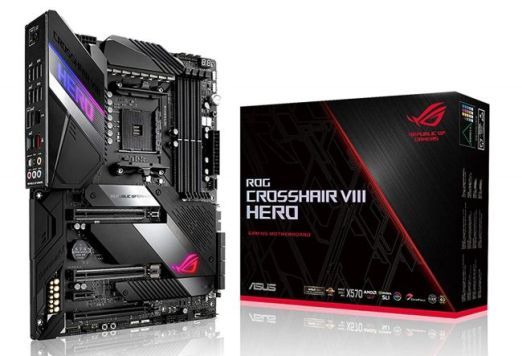
Product Specs:
Socket: AM4 (2nd & 3rd Gen Ryzen) | Chipset: AMD X570 | Form Factor: ATX | Memory Support: (4) DDR4 up to 128GB (32GB x 4)| Storage: (2) M.2, (8) SATA | PCIe Slots: x16, x16(x4), (2) x1 | Video Ports: HDMI
Average Price: $379.99
Rundown: If you have a strong need for as many USB ports as possible, look no further than the ROG Crosshair VIII Hero WiFi. It comes with 12 rear IO USB ports with eight of them being USB 3.2, providing faster transfer speeds for your external storage. On top of that, both M.2 slots are equipped with their own heatsinks, much like the aforementioned MSI MPG X570 Gaming Pro Carbon, to handle potential thermal throttling.
If the $380 price tag doesn’t scare you off, this should be on your shortlist for top-tier AM4 socket motherboards.
Gigabyte X299X Designare 10G
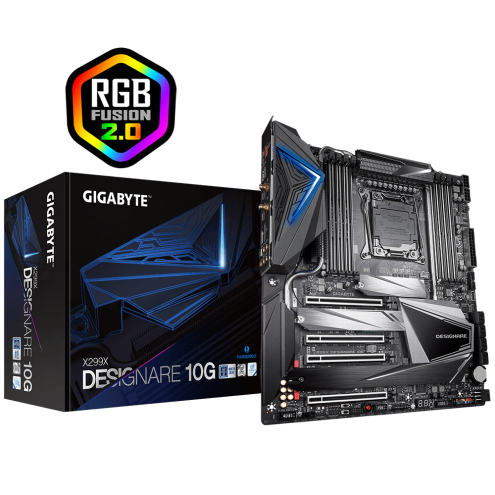
Product Specs:
Socket: LGA 2066 | Chipset: Intel X299 PCH | Form Factor: EATX | Memory Support: (8) DDR4 up to 256GB (32GB x 8) | Storage: (2) M.2, (6) SATA | PCIe Slots: (4) x16 | Video Ports: (2) DisplayPort Inputs
Average Price: $579.99
Rundown: If money is no issue and you plan on getting an X299 CPU like the over-the-top i9-9960X, this should be the only motherboard you look to.
The two Thunderbolt 3 ports offer excellent external expansion options, and the dual DisplayPort passthroughs allow for output via the Thunderbolt 3 ports. With space for up to 256GB of DDR4-4333MHz RAM, you’ll be able to stream, render, and record all at once with no problem.
The disappointment in this board comes from the rear IO where it limits you with just four USB-A ports, though they are all 3.2. Its EATX form factor also limits your case selection if that’s something you care about.
ASUS ROG Strix Z390-I Gaming

Product Specs:
Socket: LGA 1151 (8th & 9th Gen) | Chipset: Intel Z390 | Form Factor: Mini ITX | Memory Support: (2) DDR4 up to 64GB (32GB x 2) | Storage: (2) M.2, (4) SATA | PCIe Slots: x16 | Video Ports: HDMI, DisplayPort
Average Price: $219.99
Rundown: If you want a Small Form Factor (SFF) build that can handle overclocking at the highest level, look no further than the Strix Z390-I from Asus. It can offer stable 5GHz overclocking with a variety of memory speeds. What’s more is this little board doesn’t come short on features with WiFi, optical audio output, and two M.2 slots. Be aware, however, one of the M.2 slots is on the underside of the board, so make sure you install to that slot first to avoid having to pull the board out of the case to utilize it.
As with any Mini ITX board, don’t expect to fill up your machine with extra PCIe peripherals as it just has the one x16 slot you’ll likely need for your GPU. That said, the single x16 can handle high-tier graphics cards easily at high speeds.
Gigabyte Z390 Designare
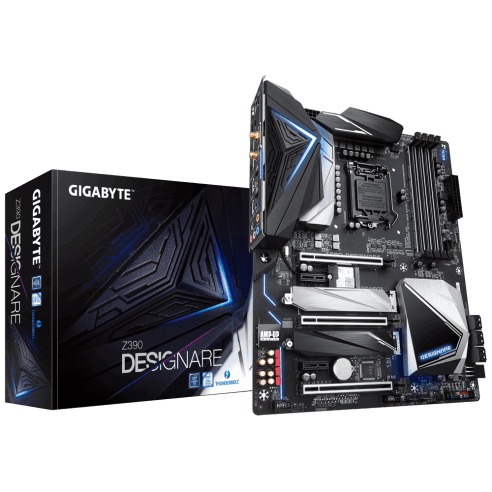
Product Specs:
Socket: LGA 1151 (8th & 9th Gen) | Chipset: Intel Z390 | Form Factor: ATX | Memory Support: (4) DDR4 up to 128GB (32GB x 4) | Storage: (2) M.2, (6) SATA | PCIe Slots: x16, x16(x8), x16(x4), (2) x1 | Video Ports: HDMI
Average Price: $269.99
Rundown: The cheaper and more practical younger brother of the Designare 10G, the Z390 version shouldn’t be overlooked. The board comes with eight USB ports on the rear IO as well as two Thunderbolt 3 ports. From a networking side of things, the Designare comes with two Gigabit Ethernet ports to allow those with the ability to team their connections, or you want to set up a small home network with your machine. A nice “future proof” bonus of this board, if you will, is that it supports 8K resolution passthrough with its DisplayPort 1.4 passthrough.
The slight knock on this motherboard is that it doesn’t seem to stably support 5GHz CPU overclocking. If you’re determined to hit that mark, you may want to look elsewhere.
ASRock Z390 Phantom Gaming ITX
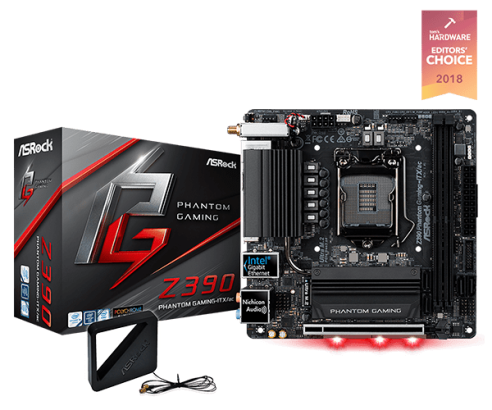
Product Specs:
Socket: LGA 1151 (8th & 9th Gen) | Chipset: Intel Z390 | Form Factor: Mini ITX | Memory Support: (2) DDR4 up to 64GB (32GB x 2) | Storage: (2) M.2, (4) SATA | PCIe Slots: x16 | Video Ports: HDMI, DisplayPort
Average Price: $179.99
Rundown: Don’t let the small form factor and sub-$200 price fool you. The Phantom Gaming ITX motherboard packs a nice punch. If you don’t need more than one PCIe slot that Larger Form Factors (LFF) offer, this board can do almost everything you need. From stable overclocking of CPUs as high as the i9-9900K to a Thunderbolt 3 port, the features here beg for a price of more than $250.
It even comes with an external WiFi antenna that can be placed away from your machine for better signal strength.
MSI MPG X570 Gaming Plus
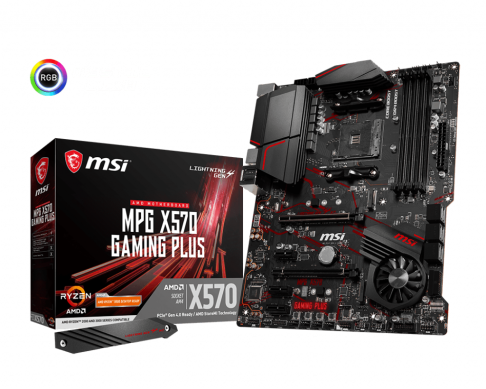
Product Specs:
Socket: AM4 (2nd & 3rd Gen Ryzen) | Chipset: AMD X570 | Form Factor: ATX | Memory Support: (4) DDR4 up to 128GB (32GB x 4) | Storage: (2) M.2, (6) SATA | PCIe Slots: x16, x16(x4), (3) x1 | Video Ports: HDMI
Average Price: $159.99
Rundown: The cheapest motherboard on this list, the MSI MPG X570 Gaming Plus is no slouch. The board is powerful enough to handle reliable overclocking of CPUs like the AMD Ryzen 7 3700X with no problems. Overall, it’s a pretty run-of-the-mill board that can handle most of what you throw at it, which is what you should expect now for $160.
If you are trying to stay low with your costs and you don’t need added features like built-in WiFi, Bluetooth, or Thunderbolt, there’s nothing that should stop you from picking this board up for your AMD rig.
ASRock X570 Aqua
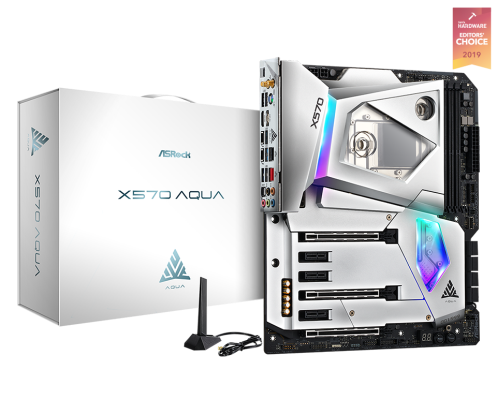
Product Specs:
Socket: AM4 (2nd & 3rd Gen) | Chipset: AMX X570 | Form Factor: EATX | Memory Support: (4) DDR4 up to 128GB (32GB x 4) | Storage: (2) M.2, (8) SATA | PCIe Slots: (3) x16 (x16/x8/x4), (3) x1 | Video Ports: HDMI, DisplayPort Input
Average Price: $999.99
Rundown: The most expansive motherboard on this list by far, the ASRock Aqua is truly a “go big, or go home” type of board. Featuring a 10GbE network connection and some of the most power-friendly overclocking ability you’ll find in a board, the Aqua truly has everything you’d want. It can even fit in ATX cases (depending on the layout), despite being labeled an EATX board.
Where it lacks, however, is that all the PCIe slots are version 2.0, which is a bit behind the times. And, other than the price for the limited edition board, another possible problem you may run into is having more than you need. The Aqua comes with so many bells and whistles that you may never fully utilize everything it offers.

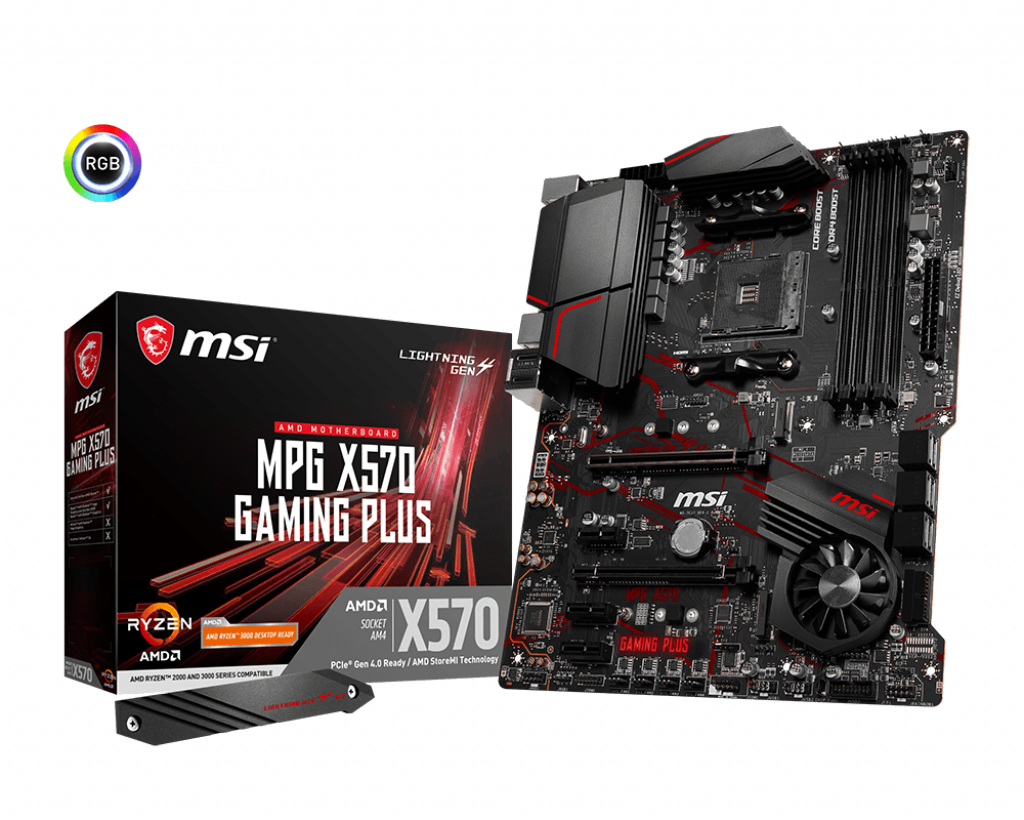




Published: Apr 6, 2020 03:16 pm